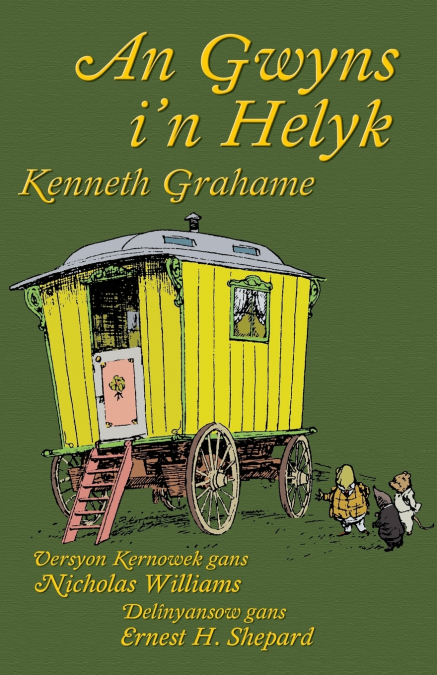
Kenneth Grahame / Nicholas Williams
 Librería Perelló (Valencia)
Librería Perelló (Valencia)
 Librería Aciertas (Toledo)
Librería Aciertas (Toledo)
 El AlmaZen del Alquimista (Sevilla)
El AlmaZen del Alquimista (Sevilla)
 Librería Elías (Asturias)
Librería Elías (Asturias)
 Librería Kolima (Madrid)
Librería Kolima (Madrid)
 Donde los libros
Donde los libros
 Librería Proteo (Málaga)
Librería Proteo (Málaga)
Yth yw 'An Gwyns i’n Helyk' classyk a lien flehes. Yma peswar chîff person i’n lyver, logosen dowr, goodh’or, brogh ha cronak, hag ymowns y oll ow côwsel hag owth omdhon kepar ha mebyon tus. Dhe nôtya kefrës yw kebmys a gefyr i’n novel a gevrînyeth, a aventur, a voralyta hag a felshyp inter an bestas aga honen. Sherp inwedh yw an aswonvos i’n lyver a’n dyvers dosbarthow socyal a Bow an Sowson in termyn Edward VII. An auctour, Kenneth Grahame, a ôstyas in Ostel Greenbank, Arwednak, rag termyn i’n vledhen 1907, hag ev a dhalathas screfa y novel brâs i’n tyller-na i’n form a lytherow dh’y vab, Alistair. In gwir yth hevel bos radn a natur an Cronak i’n lyver grôndys wàr Alistair Grahame y honen, a wrug y vêwnans troblys gorfedna kyns ès y ugansves pedn bloodh. Dres pùb tra aral, bytegyns, yma 'An Gwyns i’n Helyk' ow ry dhyn pyctur a bow natùral Nans Dowr Tamys moy ès cans bledhen alebma. An novel re beu meurgerys gans flehes dhia bàn veu dyllys rag an kensa prës i’n vledhen 1908. -- 'The Wind in the Willows' is a children’s classic, whose main characters are four anthropomorphised animals, a water rat, a mole, a badger and a toad. The novel is remarkable for its mixture of mysticism, adventure, morality and camaraderie and for the acute awareness shown in it of the differing social classes of Edwardian England. The author, Kenneth Grahame, stayed in the Greenbank Hotel, Falmouth, for a period in 1907 and it was there that he began to write his novel in the form of letters to his son, Alistair. Indeed some of the characteristics of Toad in the novel may have been based on Alistair himself, whose troubled life ended before his twentieth birthday. Most of all, however, 'The Wind in the Willows' evokes the natural environment of the Thames Valley at the beginning of the last century and it has been a favourite of children since it was first published in 1908.